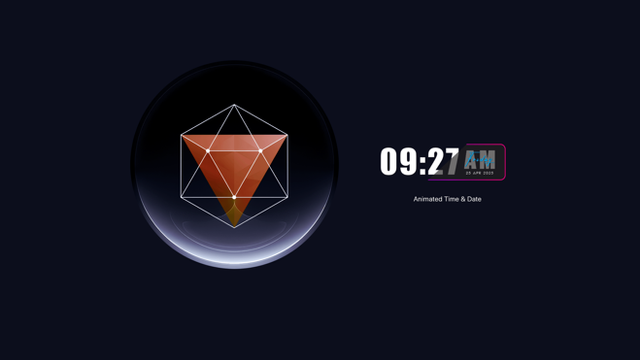HOME | DD
 hardyian — React Portal Component: Enhancing React Apps
hardyian — React Portal Component: Enhancing React Apps

#app #web #reactjs #design #developer #development #logo #react
Published: 2023-07-20 07:16:41 +0000 UTC; Views: 521; Favourites: 1; Downloads: 0
Redirect to original
Description
React, a popular front-end JavaScript library, provides developers with powerful tools and features to build modern and efficient user interfaces. One such feature that enables seamless rendering and improves the user experience is the React Portal Component. Introduced in React version 16, portals allow developers to render components outside the parent component's DOM hierarchy, providing greater flexibility and control over rendering elements in the user interface.In this comprehensive blog, we will delve into the world of React Portal Component. We will explore what is portal in react, their benefits, and how to use them effectively in React applications. By understanding this advanced feature, developers can take their UI rendering capabilities to new heights and build sophisticated and interactive applications.
What are Portals?
In React, a portal is a mechanism that allows a component to render its content outside the DOM hierarchy of its parent component. This means that a portal component can render elements at a different location in the DOM, such as at the root level or within a specific container, without being constrained by the hierarchy of its parent components.
Portals provide developers with greater flexibility and control over where and how components are rendered, making it easier to build sophisticated user interfaces with seamless interactions.
Benefits of Using Portals in ReactReact Portals offer several advantages that enhance the development and user experience:
i. Improved Modularity:Portals enable the creation of encapsulated components that can render their content in a separate part of the DOM. This modularity allows for better code organization and reusability.
ii. Enhanced User Experience:Portals can improve the user experience by rendering certain components, such as modals or toasts, outside the regular component tree. This helps to avoid layout disruptions and ensures that the user can interact with these components seamlessly.
iii. Accessibility:With proper use of ARIA (Accessible Rich Internet Applications) attributes, portals can maintain accessibility even when components are rendered outside the normal DOM hierarchy.
How React Portals Work2.1 Creating a Portal
Creating a portal in React is straightforward. To render a component as a portal, we use the ReactDOM.createPortal() method. This method takes two arguments: the element to render and the target container in which to render it.
2.2 Rendering a PortalOnce the portal component is created, it renders its content within the specified target container. This allows for the seamless integration of components into the application, even if they are not directly related to the component tree.
2.3 Portal Use CasesReact portal are versatile and can be used in various scenarios:
i. Modal and Dialog Boxes:Modal dialogs are a common use case for portals. By rendering modals outside the normal component tree, we ensure that they do not affect the underlying components' layout while remaining fully functional.
ii. Custom Dropdown Menus:Custom dropdown menus can also benefit from portals. By rendering the menu content outside the regular component tree, we can control the menu's positioning and visibility independently.
iii. Toaster and Notification Pop-ups:Toasters or notification pop-ups are often rendered outside the main component tree to display temporary messages without interrupting the user flow.
Dealing with Context in Portals3.1 Passing Data to a Portal
One challenge in using portals is passing data to the rendered components. Since portals are rendered outside the normal component tree, they do not automatically inherit the parent component's context.
To pass data to a portal, we can use React's Context API or pass props explicitly to the portal component.
3.2 Handling Context UpdatesWhen using context in portals, developers must handle context updates appropriately. Context updates in the parent component should trigger re-renders in the portal components to keep their data in sync with the latest context values.
Accessibility Considerations with Portals4.1 Proper Use of ARIA Attributes
When using portals to render components outside the normal component tree, it is crucial to ensure that the accessibility of the rendered content is not compromised.
Using ARIA attributes like role, aria-label, and aria-describedby can enhance the accessibility of portal components. It is essential to follow accessibility best practices to ensure that users with disabilities can interact with the portal components effectively.
4.2 Ensuring Tab Order and Focus ManagementProper focus management is critical in portal components, especially in modal dialogs and custom dropdown menus. Developers should ensure that focus remains trapped within the portal component when it is open and is restored to the appropriate element when the portal is closed.
Cross-Domain Portals: A New Dimension of Flexibility5.1 Rendering Components in Different Domains
React portals also open up possibilities for rendering components in different domains. Cross-domain portals allow components to be rendered in iframes or other documents, enabling seamless integration of React applications with external websites or micro-frontends.
5.2 Security Considerations with Cross-Domain PortalsWhen using cross-domain portals, developers must take security considerations seriously. Rendering components in an iframe can expose the application to potential security risks like cross-site scripting (XSS) attacks. It is essential to validate and sanitize data passed to cross-domain portals and implement strict content security policies.
Performance Optimization with React Portals6.1 Lazy Loading Components with Portals
Portals can be used for lazy-loading components, a technique where components are loaded only when needed, rather than during the initial load. By using portals, developers can delay the rendering of certain components until they are required, reducing the initial load time and improving overall performance.
6.2 Improving Initial Load TimeBy strategically using portals to render non-essential components, such as modals or pop-ups, only when needed, developers can significantly improve the initial load time of their applications . This leads to a better user experience, especially for users on slower connections or devices.
Real-world Applications of React Portals7.1 Modal and Dialog Boxes
One of the most common use cases for portals is rendering modal and dialog boxes. Modals are often used to display additional information or capture user input without navigating to a different page. By rendering modals as portals, we can avoid disrupting the main component tree and maintain a clean and organized UI.
7.2 Custom Dropdown MenusCustom dropdown menus are another practical application of portals. By rendering the dropdown menu outside the parent component tree, we can control its positioning and appearance independently of the rest of the application.
7.3 Toaster and Notification Pop-upsToasters or notification pop-ups are typically short-lived and non-blocking elements that inform users about system events or actions. By using portals, we can display these pop-ups at a global level without affecting the layout of the main application.
Best Practices and Pitfalls to Avoid8.1 Proper Usage of Portals
While portals provide great flexibility, developers should use them judiciously and only when necessary. Overusing portals or rendering components in distant parts of the DOM can lead to maintenance challenges and affect the application's overall performance.
8.2 Avoiding Unnecessary NestingNesting portals should be avoided whenever possible. Excessive nesting can make the application more complex to maintain and may cause unintended side effects.
8.3 Considerations for Server-side Rendering (SSR)When using server-side rendering (SSR) with portals, developers should ensure that the react portal ssr content is rendered on both the server and the client to maintain consistency in the rendered output.
Cross-Framework Integration with React Portal Component9.1 Integrating React Portals with Other JavaScript Libraries
React portals can be seamlessly integrated with other JavaScript libraries or frameworks to create hybrid applications. Portals provide a bridge between React components and components from other libraries, enabling developers to leverage the strengths of both technologies.
9.2 Using Portals in Hybrid ApplicationsHybrid applications that use multiple frameworks can benefit from React portals. By rendering components from different frameworks as portals, developers can maintain isolation between components while still achieving integration.
ConclusionThe React Portal Component is a powerful feature that empowers developers to render components outside the typical DOM hierarchy, providing greater flexibility and control over rendering. Portals enable the creation of sophisticated user interfaces with improved modularity, seamless interactions, and enhanced accessibility.
In this blog, we explored the concept of React portals, benefits of react portal example, and how to create and use them effectively in real-world applications. We discussed various use cases, including modal dialogs, custom dropdown menus, and toaster pop-ups, where portals can significantly enhance the user experience.
For expert guidance and assistance in utilizing React portals effectively, consider consulting the expertise of CronJ. As a leading React developer, CronJ has a deep understanding of advanced React features, including portals, and can help you optimize your application's user interface and performance. CronJ's team of skilled hire dedicated reactjs developers can provide valuable insights into leveraging portals for your specific use cases, ensuring best practices are followed, and delivering exceptional user experiences.








